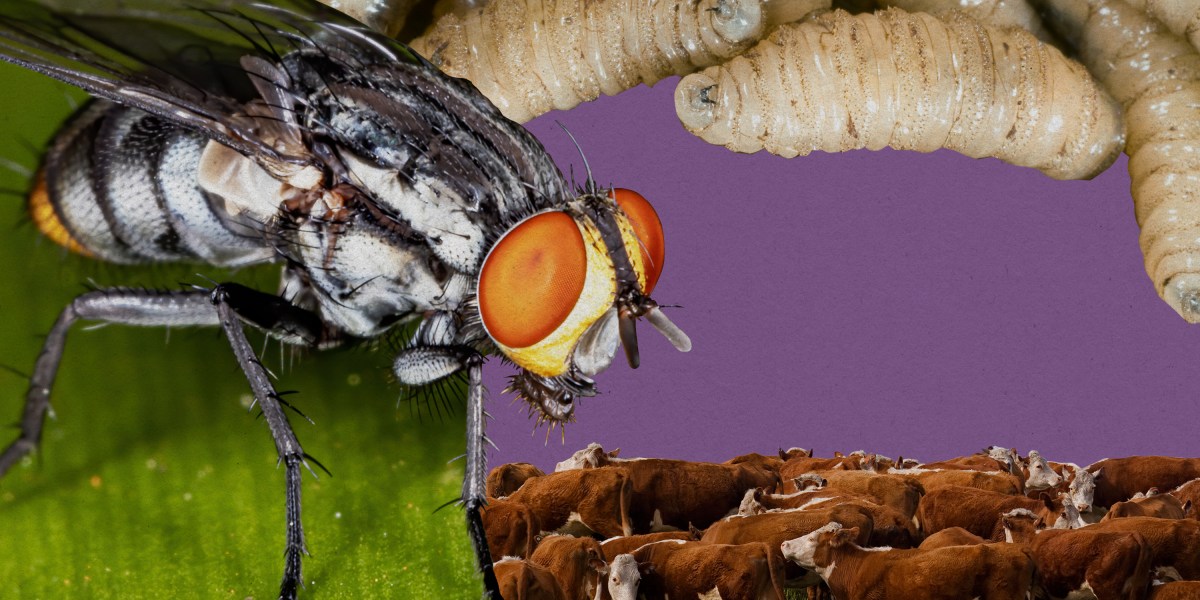The situation is urgent. In July of last year, Panama declared a state of animal health emergency amid outbreaks of cattle screwworm throughout the country. And this February, more than 200 cases of screwworm attacks on animals were reported in Costa Rica, prompting the government to declare an emergency as well. In Uruguay, screwworm flies cost the livestock industry $40 million to $154 million a year. Agricultural export is the linchpin of Uruguay’s economy—over 80% of the goods the nation exports are agricultural products. Beef, which accounts for 20% of that, is worth $2.5 billion a year.
That makes the country’s search for new tools to combat the pests even more critical, says Carmine Paolo De Salvo, a rural development expert at the IDB. “The [Uruguayan] government is under constant pressure to do something about it,” he says.
Scientists have been trying to tackle screwworms for decades. One method, known as the sterile insect technique (SIT), was developed by researchers at the US Department of Agriculture in the 1950s. SIT involves sterilizing male screwworm flies with radiation. Then, using airplanes, the DNA-damaged males are dropped on the area of infestation. When they mate with wild female flies, the eggs that are produced do not hatch, slowing population growth and preventing the spread of the parasite.
That approach has worked in many countries, including parts of Central America, freeing livestock and wildlife by the millions from the painful grip of the pests. In the US, an area-wide eradication program using SIT worked so well that in 1966, the USDA declared screwworm eradicated within the nation’s borders. The benefits to the livestock industry were immense: producers saved up to $900 million, and the health of both wild and farm animals improved.
Even with sterile males, eradicating screwworms remains a stubborn challenge, however. To prevent the screwworms from returning, the US—along with Central and South American countries—still runs a permanent barrier zone of sterile flies on the Panama-Colombia border, requiring a continuous supply of billions of flies every year. This effort is too expensive, and it’s simply not powerful enough to eradicate screwworm in South America, where the pests are firmly established and difficult to surveil, researchers say. So the search has been on for alternative tools.
COURTESY OF ALEJO MENCHACA
It was Kevin Esvelt, a pioneering leader in CRISPR gene-drive systems, who first turned the team on to the idea of using one. Esvelt had been experimenting with engineering localized versions of gene drives to target Lyme disease in the US when he met the team of Uruguayan researchers on a tour of the MIT Media Lab. Shortly after that meeting, Esvelt was on a plane to Uruguay, where he met Menchaca and convinced Uruguayan officials to initiate a gene drive project to eradicate screwworms. This would have the advantage over SIT because while SIT reduces the number of successful births, the infertility conferred by the gene drive passes through multiple generations.
The team is looking to use an approach that Scott has successfully developed for livestock pests. In a recent study, Scott and his team tested it on the spotted-wing drosophila, an invasive fly that attacks soft-skinned fruit. The gene drive they developed for that study carried an edited version of the so-called doublesex gene, which is essential for the fly’s reproduction. In caged trials, they combined the engineered fly population with a population that didn’t have the gene edits, mimicking a real-world release. They found that the gene drive was copied at a rate of 94% to 99%—beyond the efficiency they had expected. “It was the first really efficient-homing gene drive for suppression of an agricultural pest,” says Scott. He hopes that a similar technique will work with screwworms and allow researchers to perform safer tests.
It won’t be a quick process. Assembling the gene-drive system, testing it, and securing approvals for field release could take many years, says Jackson Champer, a researcher at Peking University in Beijing, who is not part of the Uruguayan team. “It’s not an easy task; there have been many failed attempts at gene drives.”


